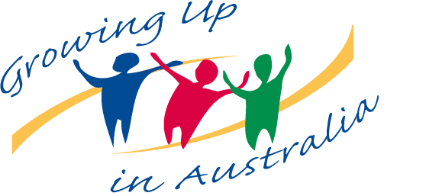LSAC data linkage administration
Each wave the LSAC study data is linked to a broad range of education and health related administrative data, as well as geospatial measures.
On this page you can find the following information: overview of LSAC administrative data linkages, consent rates by respondents and cohort across wave, and linkages using geographical measures.
Overview of administrative data linkages in LSAC
Over the years the LSAC data have been linked to different types of national administrative data including:
- Australian Childhood Immunisation Register (ACIR)
- Australian Curriculum Assessment and Reporting Authority (ACARA) (also known as MySchool)
- Australian Early Development Census (AEDC)
- Centrelink Welfare (CLNK)
- Medicare Benefits Schedule (MBS)
- National Assessment Program – Literacy and Numeracy (NAPLAN)
- Pharmaceutical Benefits Scheme (PBS) / Repatriation Pharmaceutical Benefits Scheme (RPBS)
The sources of administrative data are described in the table below.
| Area | Data source | Description | Domains | Data Availability | Cohort | LSAC Technical Paper |
|---|---|---|---|---|---|---|
| Medical | Medicare Benefits Schedule (MBS) | Contains information on processed claims, patients and service providers for services that qualify for a benefit under the Health Insurance Act 1973 (AIHW 2018, MBS). | Item number; item name; amount of benefit paid; hospital indicator; scrambled provider ID; date of payment; date of service. | For study children, records currently available for services between January 2002 (or birth for the B cohort) and early 2019. For parents of study children, records currently available for services between January 1996 and early 2019. | B and K | |
| Pharmaceutical Benefits Scheme (PBS) / Repatriation Pharmaceutical Benefits Scheme (RPBS) | Contains information on PBS scripts, payments, patients, prescribers and dispensing pharmacies for prescription medicines that qualify for a benefit under the National Health Act 1953 (AIHW 2018, PBS).
RPBS contains information on prescription medicines prescribed to Department of Veterans’ Affairs (DVA) beneficiaries, including eligible veterans, war widows/widowers and their dependants, under the Veterans’ Entitlements Act 1986 (DVA). |
Item code; item name; quantity; benefit paid; prescription type; payment category; payment status; date of payment; date of supply. | For study children, records currently available for medications supplied between May 2002 (or birth for the B cohort) and early 2017. | B and K | ||
| Australian Childhood Immunisation Register (ACIR) | Includes records of vaccinations given to children under 7 years of age who live in Australia and have been enrolled in Medicare since 1996 (ACIR). | Vaccination code; vaccination name; scrambled provider ID; date of receipt of payment; date of immunization. | Records available from birth to early 2013. | B and K | LSAC Technical Paper No. 17 | |
| Educational | National Assessment Program – Literacy and Numeracy (NAPLAN) | Includes educational achievement test records in literacy and numeracy from an annual assessment for students enrolled in years 3, 5, 7 and 9 since 2008 (National Assessment Program). | State, participation status, assessment year; age at test; scale scores for reading, writing, spelling, grammar and punctuation and numeracy at Years 3, 5 7 and 9 (and repeat years). | Currently available for consenting study children up to 2018. | B and K | LSAC Technical Paper No. 8 |
| Australian Early Development Census (AEDC) | Includes school readiness measures of early childhood development at the time children commence their first year of full-time school, every 3 years since 2009 (AEDC). | Measures across five domains of early child development including physical health and wellbeing; social competence; emotional maturity; language and cognitive skills (school-based); communication skills and general knowledge. | B | |||
| Australian Curriculum Assessment and Reporting Authority (ACARA) | Contains information about schools and the outcomes of schooling, as required by the Council of Australian Governments Education Council (ACARA). ACARA is responsible for collating NAPLAN data received from Australian schools, collecting school characteristics and managing the MySchool website. | Detailed information about school performance in NAPLAN and school demographics (e.g. the school type, student population, staff numbers and financial information). | Currently contains year level information up to 2019. | B and K | LSAC Technical Paper No. 16 | |
| Welfare | Centrelink Welfare (CLNK) | Includes Centrelink income support payment records for services provided at times of major change for seniors, jobseekers, students and trainees, families, carers, parents, people with disability, Indigenous Australians, and people from culturally and linguistically diverse backgrounds (Services Australia). | Information on income support payments; Family Tax Benefit (FTB); Carer Allowance and concession cards. See Table 8 in the Data User Guide for detailed description. | For K cohort study children, centrelink welfare benefits linked back to their 16th birthday. For the parents (P1 & P2) of K cohort study children, data is linked back to 1 January 1999. Data currently available up to 30 June 2017, apart from the FTB which is only available up to 30 June 2015. | K- Wave 7 |
Consent rates
The below table presents LSAC consent rates by respondents and both cohorts across waves. Rates were calculated based on those who participated at the wave when the consent was sought.
| Administrative data source | Wave | Respondent | Reporting | Cohort | Consent Rate |
|---|---|---|---|---|---|
| Medicare Benefits Schedule | Wave 1 | Parent 1 | Study Child | B | 93% |
| Parent 1 | Study Child | K | 93% | ||
| Wave 6 | Study Child | Themselves | K | 87% | |
| Wave 7 | Parent 1 | Themselves | B | 82% | |
| Parent 1 | Themselves | K | 89% | ||
| Parent 2 | Themselves | B | 70% | ||
| Parent 2 | Themselves | K | 72% | ||
| Wave 8 | Study Child | Themselves | B | 74% | |
| Pharmaceutical Benefits Scheme | Wave 1 | Parent 1 | Study Child | B | 93% |
| Parent 1 | Study Child | K | 93% | ||
| Wave 6 | Study Child | Themselves | K | 85% | |
| Wave 7 | Parent 1 | Themselves | B | 81% | |
| Parent 1 | Themselves | K | 88% | ||
| Parent 2 | Themselves | B | 68% | ||
| Parent 2 | Themselves | K | 69% | ||
| Wave 8 | Study Child | Themselves | B | 74% | |
| NAPLAN | Wave 3/4 | Parent 1 | Study Child | K | 95% |
| Wave 4 | Parent 1 | Study Child | B | 90% | |
| AEDC | Wave 4 | Parent 1 | Study Child | B | 90% |
| ACIR | Wave 1 | Parent 1 | Study Child | B | 94% |
| Parent 1 | Study Child | K | 92% | ||
| Centrelink | Wave 7 | Parent 1 | Themselves | K | 85% |
| Parent 2 | Themselves | K | 59% | ||
| Study Child | Themselves | K | 81% |
More information about consent rates can be obtained from Consent to data linkage in a child cohort study, Growing Up in Australia: The Longitudinal Study of Australian Children, or in the LSAC Data User Guide.
Linkages using geographical measures
Census of Population and Housing data, Australian Bureau of Statistics (ABS)
Public data from the ABS Census of Population and Housing have been added to the LSAC data to enhance the range of neighbourhood characteristics available for analysis with the LSAC data. The census items currently included are:
- SEIFA – rounded off to the nearest 10 for general release file
- Remoteness area classification
- Percentage of persons aged 5, 10 and 18 years
- Percentage of persons born in Australia
- Percentage of persons speaking English-only at home
- Percentage of persons with Aboriginal and Torres Strait Islander (ATSI) origins
- Percentage of persons who completed Year 12 schooling
- Percentage of persons in above-median income category
- Percentage of persons working
- Percentage of households with internet capacity (in 2006 Census only)
- Percentage of households with broadband (in 2006 Census only)
Distance to Coast (DTC) data
Geographic data offers significant potential to enhance analytic utility by adding new and informative dimensions to data. Distance to coast data can be used to analyse the impact of access to services and amenities such as climate, environmental and urban conditions on well-being and health.
The distance measure is the straight-line distance for the residential to closest point on the Australian coastline. While this distance measure provides a readily useable and comparative measure of coastal accessibility, it does not reflect access to transport infrastructure, such as access to roads, bridges or railways, or geographic impediments, such as mountains or rivers.
Distance to coast has been generated for every residential address in Waves 1-8 by geocoding latitude and longitude information. Distance to coast data are only available with restricted release files.
A total of 63,813 distances were calculated, providing distance to the coast measures for 10,089 study participants over the 8 waves. Distance to coast is calculated using the address where the Study Child was living at the time of interview.
Additional geospatial linkages
There is a unique opportunity for researchers to apply for additional data linkages based on geospatial units. Bespoke linked datasets can be tailored to suit your research needs and interests.
Some examples of geospatial linkage projects include:
- access to greenspace
- distance to services
- walkability
- air pollution
All applications for data linkage projects must be submitted to Longitudinal Studies. More information about data linkage applications can be found in the Longitudinal Studies Data Access and Use Guidelines.
LSAC Data Users newsletter

Keep up-to-date with LSAC news for data users.
Sign up to our email alert service.






